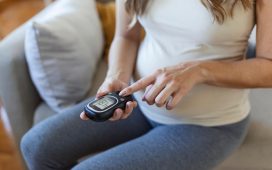Best performance achieved with model that differentiates occiput anterior position
By Lori Solomon HealthDay Reporter
MONDAY, Nov. 18, 2024 (HealthDay News) — A deep learning model is capable of assessing fetal head position using transperineal ultrasound during the second stage of labor with excellent overall accuracy, according to a study published online in the October issue of the European Journal of Obstetrics & Gynecology and Reproductive Biology.
Ruben Ramirez Zegarra, from University of Parma in Italy, and colleagues developed a deep learning model using convolutional neural networks to automatically identify the fetal head position at transperineal ultrasound in the second stage of labor. Data included 2,154 transperineal images from eligible participants across 16 collaborating centers.
The researchers reported that the model for the classification of the fetal head position in the axial plane at transperineal ultrasound had excellent overall performance (94.5 percent), a sensitivity of 95.6 percent, a specificity of 91.2 percent, an F1 score of 0.92, and a Cohen’s kappa of 0.90. The best performance was achieved by the model that differentiated occiput anterior position versus fetal head malpositions, with an accuracy of 98.3 percent. The second-best model differentiated occiput posterior versus occiput transverse positions, with an accuracy of 93.9 percent. The model that classified right versus left occiput transverse position had an accuracy of 91.3 percent.
“Our deep learning model can differentiate between specific subtypes of fetal head malpositions, which makes it a potential clinical tool in the management of fetal malpositions in the labor ward,” the authors write.
Copyright © 2024 HealthDay. All rights reserved.








